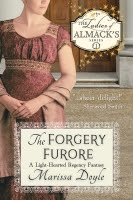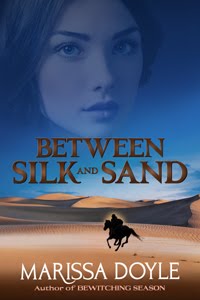 I
do enjoy reading periodicals from the nineteenth and early twentieth centuries—the
articles, the stories, the illustrations, and even the ads. They don’t necessarily
offer a completely accurate picture of their eras: overall, most general-consumption
magazines present an aspirational picture of their worlds —how its readers
would like their lives to be. After all, does any magazine you read truly reflect
the reality of your everyday life?
I
do enjoy reading periodicals from the nineteenth and early twentieth centuries—the
articles, the stories, the illustrations, and even the ads. They don’t necessarily
offer a completely accurate picture of their eras: overall, most general-consumption
magazines present an aspirational picture of their worlds —how its readers
would like their lives to be. After all, does any magazine you read truly reflect
the reality of your everyday life?
Still,
they do provide a window into the past that is often useful and informative. To
this history geek, they can be at times surprising, eye-opening, and—sometimes—utterly
delightful.
 I
have before me the January 1811 edition of The Lady’s Magazine, or,
Entertaining Companion for the Fair Sex; Appropri-ated Solely to Their Use and
Amusement (gotta love the snappy title.) The “top story” is the beginning
of a biography of the then-General Viscount Wellington (on the first step up
the ladder leading to his eventual dukedom) who was busily engaged in the
Peninsula. Like most of the pieces in this magazine, it is one installment of a
longer piece; aside from letters to the editor and a few shorter extracts from essays
and books, most of the articles here are continuations from issue to issue. The
accompanying portrait engraving, purporting to be “an accurate likeness”, makes
him look considerably younger (and plumper) than most of the portraits I’ve
seen!
I
have before me the January 1811 edition of The Lady’s Magazine, or,
Entertaining Companion for the Fair Sex; Appropri-ated Solely to Their Use and
Amusement (gotta love the snappy title.) The “top story” is the beginning
of a biography of the then-General Viscount Wellington (on the first step up
the ladder leading to his eventual dukedom) who was busily engaged in the
Peninsula. Like most of the pieces in this magazine, it is one installment of a
longer piece; aside from letters to the editor and a few shorter extracts from essays
and books, most of the articles here are continuations from issue to issue. The
accompanying portrait engraving, purporting to be “an accurate likeness”, makes
him look considerably younger (and plumper) than most of the portraits I’ve
seen!
Of
universal interest, I’m sure, is a brief but alarming piece titled “Ladies’ Clothes
on Fire”, advocating for heavy woolen “fire cloaks” to become an accepted part
of the décor of “every parlour and ’drawing-room in the kingdom, and deemed as
necessary an article of its furniture, as the hearth-rug, the fire-screen, or
the fender.”
Then
there’s a touching story of “The Remarkable Docility of a Sow”, detailing the
story of pigs who have been raised alongside hunting dogs and trained to point
as well as their canine step-siblings.
Of
course, there’s a fashion plate, showing “London Morning and Evening Dress” in
shades of black and gray as mourning for Princess Amelia was still in effect. The black velvet evening dress, trimmed “with velvet and gold cord twisted together” would pass muster today at an evening event, I think.
But
the piece that surprised me the most was a brief item in the Births, Marriages,
and Deaths section: on January 9 was listed the death “At Gretna Green, aged
79, the celebrated Joseph Pasley, first (it is said) a tobacconist, afterward a
fisherman, and finally, without ordination or commission, a volunteer,
self-constituted priest of Hymen, better known by the appellation of the
Gretna-Green Parson*” The asterisk indicates a note reading, “On a trial
respecting the validity of one of his marriages—on which occasion, he appeared
in court as a witness—we recollect the judge characterizing him as a blacksmith.”
This is, of course, the famous performer of clandestine marriages for eloping couples from England who fled just over the Scottish border—and out of the
reach of English church law...and evidently a news-maker even then!








1 comment:
That article about the fire cloak is interesting and reveals one of the downsides to the Industrial Revolution. While cotton cloth is now cheap, it's also highly flammable. Women used to wear wool and linen, natural materials that smolder. Henry Wadsworth Longfelllow's beloved wife Fanny died when her muslin dress caught on fire.
Post a Comment